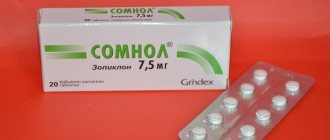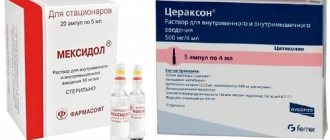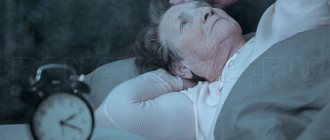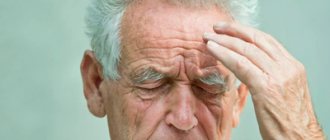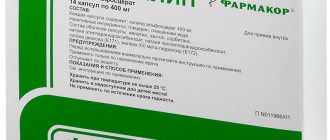Before we get into the zopiclone reviews, here are three important facts about this drug. First: it is a powerful prescription sleeping pill. Second: it is safe, but only when taken correctly. Third: the drug is not currently sold under its “real” international name. But its analogues are available, such as Imovan and some others. It makes no difference whether you read reviews about the sleeping pill Zopiclone or about some substitute with the same active ingredient. They are the same.
Express test:
Take a comprehensive sleep test
Study design
The English researchers used data from 27,090 patients with dementia.
The study authors compared the side effects of 3,532 patients prescribed Z-drugs for the first time with 1,833 patients with sleep disorders prescribed non-sedating medications, 10,214 patients prescribed non-sedating medications in a general practitioner setting, and 5,172 patients prescribed benzodiazepines for the first time.
High dose Z-drugs and benzodiazepines were equivalent to ≥7.5 mg zopiclone or >5 mg diazepam.
As primary endpoints
examined fracture, falls, mortality, acute bacterial infections, ischemic stroke/transient ischemic attack, and venous thromboembolism over 2 years of follow-up.
Clinical experience with the use of Zopiclone (Relaxone) for insomnia
The American Academy of Sleep Medicine defines insomnia as “recurrent disturbances in the initiation, duration, consolidation, or quality of sleep that occur despite adequate time and conditions for sleep and are manifested by disturbances of various types of daytime activities.”
Table 1. General characteristics of the studied patients
Table 2. Results of questionnaire surveys
Table 3. Dynamics of subjective sleep characteristics while taking Relaxon
Rice. 1. Dynamics of polysomnographic indicators after Relaxon therapy.
Table 4. Dynamics of sleep structure indicators in patients with insomnia before and after therapy with Relaxon
Thus, the following symptoms are characteristic of insomnia:
- persistent nature of sleep disturbances (over several nights) with sufficient time for sleep (insomnia cannot be considered a lack of sleep in intensively working members of an industrial society);
- the possibility of developing various types of sleep structure disorders;
- impairment of daytime functioning in the form of decreased attention, mood, daytime sleepiness, autonomic symptoms, etc.
The term “insomnia,” often used even by doctors, is incorrect, since numerous objective studies (using polysomnography) conducted in various sleep centers, including Russian ones, did not reveal a complete lack of sleep in patients with similar complaints [1]. The study of insomnia is not an easy thing, which is due to significant interpersonal differences in the need for sleep and the need to differentiate healthy people who sleep little from those with insomnia.
Insomnia can be considered one of the most common clinical syndromes along with headache and back pain [4, 6]. The prevalence of insomnia in the general population, according to numerous studies, is 20–48% [2]. Among people in older age groups, sleep disorders are more common, reaching 70%. The most severe forms of insomnia, forcing one to resort to chronic use of sleeping pills, are observed in 12% of the population.
The causes of insomnia are varied, primarily related to stress, as well as changes in the physical environment, psychological situation and certain diseases.
There are the following types of insomnia: adaptation; psychophysiological; associated with a mental disorder; caused by inadequate sleep hygiene; associated with taking medications or other substances; paradoxical (sleep agnosia); behavioral childhood (type of associations for falling asleep, type of sleep settings, combined type); developing against the background of somatic pathology [5].
The most common disorder is adaptation insomnia
– a sleep disorder that occurs against the background of acute stress, conflict or environmental change. The consequence of this is an increase in the overall activity of the nervous system, making it difficult to fall asleep when falling asleep in the evening or waking up at night. With this form of sleep disturbances, it is possible to determine with great confidence the cause that caused them. Adaptive insomnia lasts no more than 3 months.
If sleep disturbances persist for a longer period of time, they become overgrown with psychological disorders, the most typical of which is the formation of “fear of sleep.” At the same time, the activity of the nervous system increases in the evening hours, when the patient tries to “force” himself to fall asleep quickly, which leads to worsening sleep disturbances and increased anxiety the next evening. This form of sleep disturbance is called psychophysiological insomnia.
.
A special form of insomnia is “pseudo-insomnia”
(according to the previous classification - a distorted perception of sleep), when the patient claims that he does not sleep at all, however, when conducting a study that objectifies the picture of sleep, the presence of 6 or more hours of sleep is confirmed. The main symptom-producing factors are a disturbance in the perception of sleep, associated primarily with the peculiarities of the sense of time at night (periods of wakefulness at night are well remembered, and periods of sleep, on the contrary, are amnesic) and fixation on one’s own health problems associated with sleep disturbance.
Insomnia can develop due to inadequate sleep hygiene,
i.e., features of human life that lead to increased activation of the nervous system in the periods preceding bedtime.
This could be drinking coffee, smoking, physical and mental stress in the evening, or activities that interfere with the onset and progression of sleep (going to bed at different times of the day, using bright light in the bedroom, an uncomfortable environment for sleep). Similar to this form of disorder is behavioral insomnia in childhood
, when children form incorrect associations associated with sleep (for example, the need to fall asleep only when rocked), and when trying to correct them, the child experiences active resistance, leading to a reduction in sleep time.
Of the so-called secondary, i.e., sleep disorders associated with other diseases, insomnia is the most common in mental disorders
(in the previous terminology – for diseases of the neurotic range).
70% of patients with neuroses have disturbances in the initiation and maintenance of sleep. Often, sleep disturbance is the main symptom-forming cause, due to which, in the patient’s opinion, numerous “vegetative” complaints develop (headache, fatigue, blurred vision, etc.) and social activity is limited (for example, patients believe that they cannot work because they don’t get enough sleep). Complaints of sleep disturbances are also common in patients with somatic diseases, such as hypertension, diabetes mellitus, and stroke. In this case, a diagnosis of insomnia associated with a disease of the internal organs is made.
A special form of insomnia is sleep disturbances associated with a disorder of biological rhythms.
body. At the same time, the “internal clock” that gives the signal for the onset of sleep is either late, and preparation for sleep occurs too late (for example, at 3–4 am), or it is in a hurry and it comes too early, in the evening. Accordingly, either falling asleep is disrupted when a person unsuccessfully tries to fall asleep at an acceptable time, or morning awakening occurs too early according to standard time (but at the “correct” time according to the internal clock). A common case of sleep disturbance due to a biological disorder is insomnia, which develops when quickly moving through several time zones in one direction or another.
The consequences of insomnia are numerous and unpleasant: increased stress, decreased immunity, mental illness (depression, psychosis), cardiovascular diseases (hypertension, coronary artery disease, stroke), obesity, psychosomatic disorders, cognitive disorders, accelerated aging processes, the risk of road accidents.
Among the consequences of insomnia are social and medical [6]. Social consequences are associated with daytime sleepiness, which develops when sleep does not fulfill its restorative function. This problem is of great public importance and primarily concerns driving while drowsy. The medical consequences of insomnia are being actively studied. Studies have shown that in patients with sleep disorders, arterial hypertension is more severe and more difficult to correct [1].
Studies conducted on special insomnia-like
(
ins-l
) in Drosophila flies, showed [7]:
- Sleep duration in ins-l
flies is 60 minutes. per day (less than in normal flies), there is difficulty initiating and maintaining sleep, and there is evidence of daytime cognitive impairment; - ins-l
flies are hyperactive and hypersensitive to the environmental situation; - ins-l
flies live less; - ins -l
flies have increased levels of dopamine, triglycerides, cholesterol and free fatty acids; - ins-l
have their circadian rhythms disrupted: they lose the ability to sleep in constant darkness.
Many of these disturbances are comparable to what occurs in patients with insomnia.
In the diagnosis of insomnia, a clinical and instrumental approach is used [1, 2, 5, 6]. During a clinical examination, it is necessary to evaluate the following indicators: 1) individual chronobiological stereotype of a person (owl-lark, short-long sleeper), which may be genetically determined ;
2) cultural characteristics (for example, siesta is an afternoon nap, which is the norm in countries with hot climates); 3) professional activities (night and shift work, flights across time zones); 4) clinical picture; 5) psychological status of the patient; 6) concomitant pathology (somatic, neurological, psychiatric, toxic and medicinal effects).
The most informative research method for diagnosing sleep disorders is polysomnography - an objective method for assessing sleep parameters, including simultaneous continuous recording of an electroencephalogram (EEG), electrooculogram (EOG), electromyogram (EMG) of the mental muscles, and, if necessary, breathing parameters during sleep with recording of oronasal flow air, respiratory movements of the chest and abdominal walls, breathing noise, blood oxygen saturation (saturation), heart rate and body position in bed. Assessment of stages and phases is carried out on the basis of generally accepted international classification. When processing the data, a hypnogram is built and sleep phases are assessed (slow sleep phase - FMS and REM sleep phase - FBS) and standard indicators: sleep duration; latent period of sleep (time to fall asleep), motor activity, latent periods of stages and phases of sleep; time of wakefulness within sleep; duration, representation and relationships between stages and phases of sleep. Polysomnography allows you to obtain an objective picture of sleep structure and compare it with the patient’s subjective assessment. Objective data help clarify the nature of the sleep disorder: presomnia – difficulty initiating sleep; intrasomnic – difficulties maintaining sleep and post-somnic – early awakenings and difficulties in the transition from sleep to wakefulness. The choice of the optimal type of therapeutic intervention often depends on the type of sleep disorder.
Treatment tactics for insomnia include two approaches. The first is the elimination of factors (external and internal) that negatively affect the sleep process. The second is an active influence on the ability to fall asleep and the structure of sleep itself.
The following are methods of drug and non-drug treatment for insomnia [3, 8].
- Non-drug: psychotherapy, phototherapy, encephalophonia (“music of the brain”), acupuncture, aromatherapy.
- Medication.
Over-the-counter medications.
- Preparations and collections of soothing herbs.
- Melatonin preparations.
- Prescription drugs.
Derivatives of imidazopyridine, cyclopyrrolone and pyrosolopyrimidine.
- Antihistamines.
- Benzodiazepines.
- Barbiturates.
- Neuroleptics with sedative effect.
- Antidepressants with sedative effect.
, benzodiazepine derivatives are the most widely used among all prescription drugs for the treatment of insomnia.
, the use of which is significantly decreasing throughout the world. This is due to the fact that with long-term use of benzodiazepine drugs, negative effects develop that become of paramount importance: addiction (the need to increase the dose), dependence (withdrawal syndrome during withdrawal), behavioral toxicity (decreased memory, attention, deterioration of coordination), daytime sleepiness . If sleep apnea syndrome is suspected (in patients with snoring), benzodiazepines and barbiturate derivatives are contraindicated [3, 8].
Relatively recently (since the late 80s) non-benzodiazepine hypnotics were introduced into clinical practice - the so-called “three Z” group: cyclopyrrolone derivatives - zopiclone, imidazopyridine - zolpidem, pyrosolopyrimidine - zaleplon. They are currently the safest and most effective of hypnotic drugs.
Zopiclone (Relaxone) is a hypnotic drug of the cyclopyrrolone series. Relaxone is a non-benzodiazepine ligand of the GABA-chloride receptor complex, which enhances the conductivity of GABAergic receptors. The drug was shown to bind to the GABA complex in a different part of the receptor to which benzodiazepines usually bind. In addition, zopiclone, unlike benzodiazepines, binds only to central receptors and has no affinity for peripheral benzodiazepine receptors. The drug is quickly absorbed from the gastrointestinal tract; its peak plasma concentration is reached after 100 minutes, and the threshold for hypnotic action is within 30 minutes after taking 7.5 mg. The half-life of zopiclone in adults is 5–6 hours, so it does not cause post-somnic effects, lethargy and drowsiness during wakefulness, and does not have a negative effect on motor functions. Abruptly stopping the drug does not cause withdrawal symptoms. In old age, with long-term use of zopiclone, the accumulation of the drug in the body is minimal. In comparative studies, zopiclone provided better hypnotic effects and fewer adverse reactions than nitrazepam, triazolam, and temazepam (traditional benzodiazepine hypnotics).
We conducted an open, non-comparative study of the drug Relaxon to evaluate its effectiveness and safety in patients with insomnia. Before and after a 10-day course of treatment with Relaxon, 20 patients with insomnia were examined, 10 of them using polysomnography.
The criteria for inclusion of patients in the study were as follows:
- Presence of a leading complaint of sleep disturbances.
- Age from 20 to 60 years.
- No clinical signs of dementia.
- Formal consent of the patient to participate in the study.
- Criteria for excluding patients from the study:
- Severe and acute somatic diseases.
- Pregnancy, lactation.
- Presence of verified oncological pathology.
- Taking psychotropic drugs.
- Treatment with cytostatics.
- Research methods
- Clinical assessment of patients.
Analysis of personal data (see website www.sleepmed.ru):
2.1. Questionnaire for scoring subjective sleep characteristics. The maximum total score is 30 points. 22 or more points
– these are indicators characteristic of healthy subjects,
19–21 points
are borderline values, and indicators
less than 19 points
are a sign of trouble. 2.2. Questionnaire for screening sleep apnea syndrome (assessment of SAS functions) – the norm is less than 4 points. 2.3. The Epworth sleepiness scale is no more than 5 points. 2.4. Hospital Anxiety and Depression Scale: 0–7 points – absence of significantly expressed symptoms of anxiety/depression; 8–10 points – subclinical level of anxiety/depression, 11 points and above – clinically significant anxiety/depression.
Polysomnography. Polygraphic registration of night sleep was carried out using simultaneous continuous recording of EEG, EOG, EMG. The assessment of sleep stages and phases was carried out on the basis of generally accepted international criteria [8]. The following standard parameters were assessed: sleep duration; sleep latency period; number of movements; latent periods of sleep stages and phases; time and percentage of wakefulness within sleep; the duration of the 1st, 2nd, 3rd, 4th stages of the slow-wave sleep phase and the REM sleep phase, as well as their relationship with the total duration of sleep. In addition to assessing standard sleep structure parameters, the integral sleep quality index (IQI) was taken into account. It is calculated using mathematical analysis based on calculating the confidence interval of 37 polysomnogram parameters (normal physiological sleep is characterized by sleep quality index values from 1 to 9; SQI above 9 indicates a disturbance in the structure of night sleep) [2].
Pharmacological method. All patients took Relaxone before bedtime for 10 days at a dose of 7.5 mg. 2 weeks before the start of therapy, patients stopped taking any other hypnotics or sedatives.
Statistical. Parametric and nonparametric statistical methods were used. Significant differences were assessed (p
Research results
20 patients with insomnia were examined, including 7 men and 13 women aged from 23 to 60 years, with body weight from 49 to 85 kg, height from 150 to 183 cm. The duration of insomnia varied from 2 months to 25 years. The general characteristics of the examined patients are presented in Table. 1.
During the last month before the study, patients complained of poor sleep with a frequency of 2 to 7 times a week. At the same time, 20% of patients considered sleep disorders to be spontaneous, that is, they could not name the cause of their occurrence, 30% associated them with events of previous wakefulness. The remaining 50% of subjects reported both spontaneous and event-related sleep disorders.
When dividing the subjects into “night owls” and “larks,” 60% considered themselves “night owls,” 35% considered themselves “larks,” and 1 subject found it difficult to determine the nature of circadian rhythms. 2 people noted the habit of sleeping during the day.
All patients had difficulty falling asleep, 80% had difficulty maintaining sleep, frequent awakenings at night, problems with subsequent falling asleep, and shallow night sleep. Post-somnia disorders in the form of inability to quickly get involved in work activities in the morning were noted by 60% of patients. In addition, half of them complained of early awakening, 65% of daytime sleepiness, 40% of occasional complete lack of sleep at night.
In 85% of cases, patients cited stress as the cause of insomnia, in 65%, life events, and in 50%, mood swings. 15% of patients had snoring, as well as discomfort in the limbs, which were also regarded as causes of sleep disturbance. 10% of the subjects had a history of night or daily work, 15% considered rapid change of time zones (flights) to be one of the causes of sleep disorders. Seasonal fluctuations in the course of insomnia were noted by 2 patients.
The vast majority of patients (70%) had experience using sleeping pills of various groups, mainly benzodiazepines.
Patients rated their sleep at 14.9 points (Table 3), which is significantly lower than the values typical for healthy people. Subjective dissatisfaction with sleep is confirmed by polysomnography data. Almost all sleep indicators differed significantly from those in healthy people: sleep duration was reduced, as well as the duration of delta sleep and rapid eye movement (REM) sleep, the time to fall asleep, the duration of superficial stages of sleep and the time of wakefulness within sleep were increased, and motor activity during sleep was increased. .
Results of questionnaire research methods
During Relaxon therapy, a slight decrease in the level of anxiety was noted, but, most importantly, the values of the questionnaire for screening sleep apnea syndrome and the sleepiness scale did not increase (Table 2), which indicates the absence of an aftereffect of the drug.
Subjective sleep assessment
Under the influence of Relaxon, such subjective characteristics of sleep as the duration of falling asleep, the duration and quality of sleep, the number of night awakenings, as well as the quality of morning awakening improved, which ultimately led to an increase in the total score by 41% (Table 3), which almost reached the level of healthy people.
Results of polysomnographic studies
Objective polysomnographic studies confirmed the “subjective” effectiveness of Relaxon (Fig. 1, Table 4), as evidenced by: a decrease in the time of falling asleep and the number of awakenings from sleep, an increase in the total duration of sleep, the duration of stage 2 and delta sleep, as well as a decrease values of the sleep quality index, which indicates the formation of a more physiological sleep structure after using the drug.
In Fig. 1 only reliable ones are marked (p
The results of the study of Relaxon indicate the high effectiveness of the drug in patients with insomnia. Subjective feelings of a positive effect are confirmed by objective studies of the structure of sleep, which has undergone positive changes, which affect such important indicators as the duration of the 2nd stage of sleep and delta sleep, the process of falling asleep, and the total duration of sleep. In addition, the total duration of sleep, latency periods of the 1st and 2nd stages of sleep, as well as the ICS value after Relaxon therapy did not differ significantly from the indicators of healthy subjects. Of great importance is also the absence of any changes in the results of questionnaire data regarding drowsiness and sleep apnea syndrome, which indicates the absence of an aftereffect of the drug. Thus, Relaxon can be assessed as an effective hypnotic with a high level of safety, which is recommended for patients with sleep disorders.
results
- The average age of the patients was 83 years. 62% of patients were women. It was noted that among 3532 patients who started taking Z-drugs, 17% started taking them at a high dose.
- In patients receiving high-dose Z-drugs, compared with patients with sleep disorders who did not receive drugs, the risk of fractures increased by 1.67 times, femoral fracture by 1.96 times, falls by 1.33 times, and ischemic heart failure. stroke by 1.88 times.
- Similar results were observed when compared with non-sedative medications prescribed by primary care physicians.
- Minimal risks were observed when using doses ≤ 3.75 mg of zopiclone.
- There was no significant increase in risk with the use of Z-drugs compared with non-sedative drugs in terms of mortality, infections and venous thromboembolism.
- There were no significant differences in the incidence of adverse events between Z-drugs and benzodiazepines, excluding a 27% reduction in mortality for Z-drugs (hazard ratio, 0.73 [95% CI, 0.64 to 0.83]).
Negative reviews
“I needed to sleep during the 5-hour flight. My wife shared her favorite zopiclone. I took it, expecting to fall asleep right away. I fell asleep and then the flight attendant woke me up. After about three minutes I understand that that’s it, the flight is over. But I feel weak all over my body, I feel terrible drowsiness, I can’t think of anything – I want to sleep! I barely made it to the hotel. A terrible drug, it’s impossible to wake up after it!”
Doctor's comment. This is just a demonstration of how you can take medicine incorrectly. Zopiclone works for 6-8 hours. Before going to bed, be sure to make sure that waking up will not happen earlier. Otherwise, drowsiness and disorientation may occur.
“An elegant blister, beautiful oval tablets with a score... But the drug doesn’t work! The doctor diagnosed me with a severe anxiety disorder, prescribed a bunch of medications... And I didn’t take them, because I read them and it turned out that half of them are generally for psychiatric patients. Psychotherapy is still this - who needs it? I started taking only zopiclone. The action is so-so, sleep comes quickly, but superficially. The anxiety doesn't go away."
Doctor's comment. You should not rely on this drug to improve sleep or treat all other diseases. Zopiclone has its own task - to create sleep for one night. But it cannot fight the causes of insomnia and related disorders (like any other sleeping pill). In such cases, complex therapy is needed!
